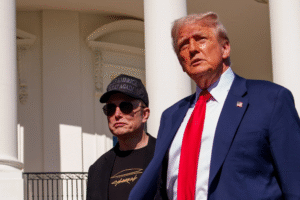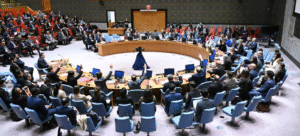The Silenced Wire: Examining the Implications of the White House Media Policy Changes
A Precarious Balance: The Administration and the Press
The relationship between a governing administration and the press is a delicate and often contentious one, predicated on the fundamental principles of transparency and the public’s right to know. In a democratic society, the media acts as a crucial watchdog, holding power accountable and informing citizens on matters of public interest. Therefore, any shift in the dynamics of this relationship warrants careful scrutiny, particularly when it involves restricting access to the highest office in the land. The reported implementation of a new media policy by the current US administration, which curtails wire services’ access to the President, represents a significant development that raises serious concerns about government control over information dissemination and the potential erosion of press freedom.

Chokepoint in Information Flow: Curtailing Wire Service Access
Wire services, such as the Associated Press (AP), Reuters, and Agence France-Presse (AFP), play a pivotal role in the global news ecosystem. Their comprehensive coverage, often disseminated to countless news outlets worldwide, forms the backbone of much of the information consumed by the public. By limiting their access to the President, the administration is not merely inconveniencing journalists; it is strategically hindering the ability of these foundational news organizations to directly gather and report on the President’s activities, statements, and interactions. This curtailment acts as a choke point in the flow of information, potentially allowing the administration to filter and frame narratives more effectively before they reach a wider audience.
Questionable Justifications: Suspicions of Narrative Control
The stated rationale behind such a policy, if any official explanation has been provided, is crucial to understanding its intent. Administrations often cite concerns about accuracy, bias, or the need to control the message directly. However, restricting access to established wire services, known for their commitment to factual reporting, raises questions about the sincerity of such justifications. Instead, it fuels suspicion that the policy is a deliberate attempt to circumvent independent scrutiny and cultivate a more favorable media landscape. By prioritizing direct communication channels and potentially favoring outlets perceived as more sympathetic, the administration risks creating an echo chamber where critical perspectives and unfiltered information are marginalized.
The Ripple Effect: Impact on the Wider Media Landscape
The implications of this policy extend beyond the immediate limitations faced by wire service journalists. The ripple effect can impact the entire media landscape. When primary sources of information are restricted, other news organizations that rely on wire service reporting may find their ability to provide comprehensive and independent coverage diminished. This can lead to a homogenization of news, with a greater reliance on official statements and administration-controlled narratives. The diversity of voices and perspectives, essential for a healthy democracy, could be stifled as a result.
A Dangerous Precedent: Global Implications for Press Freedom
Furthermore, such a policy sets a potentially dangerous precedent. If the highest office in the US, a nation that often champions press freedom on the global stage, begins to restrict access to established news organizations, it could embolden other governments around the world to adopt similar tactics. Authoritarian regimes, already adept at controlling information flows, might see this as tacit approval for further curtailing press freedom within their own borders. This could have a chilling effect on independent journalism globally, making it more challenging for reporters to hold power accountable and inform the public in less democratic contexts.
Timing and Trust: Navigating the Information Age
The timing of this reported policy change is also noteworthy. In an era characterized by rapid information dissemination, the constant battle against misinformation, and increasing polarization, the need for accurate and independent reporting is paramount. Limiting access to wire services, which often adhere to rigorous journalistic standards, could inadvertently create a vacuum that is filled by less credible sources and partisan narratives. This could further exacerbate societal divisions and erode public trust in reliable information.
The Price of a Silenced Press
In conclusion, the reported White House media policy that curtails wire services’ access to the President represents a concerning development with potentially far-reaching consequences. While administrations have always sought to manage their public image, restricting the ability of foundational news organizations to directly report on the President’s activities raises serious questions about transparency, press freedom, and the public’s right to know. A healthy democracy thrives on an informed citizenry, and any policy that hinders the free flow of accurate and independent information risks undermining the very foundations of that democracy. The administration must be transparent about the rationale behind this policy, and the potential long-term implications for the media landscape and the public discourse deserve careful and critical examination. The silencing of the wire could ultimately lead to a less informed and a less accountable society.




















